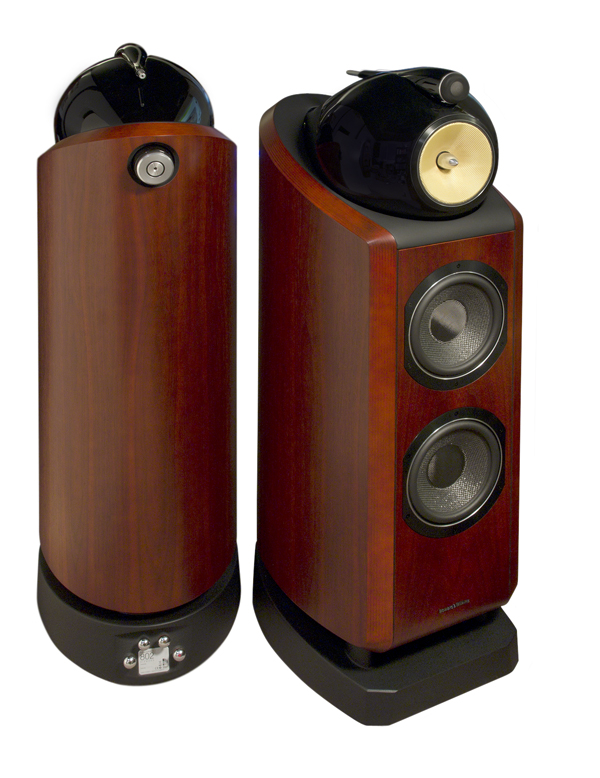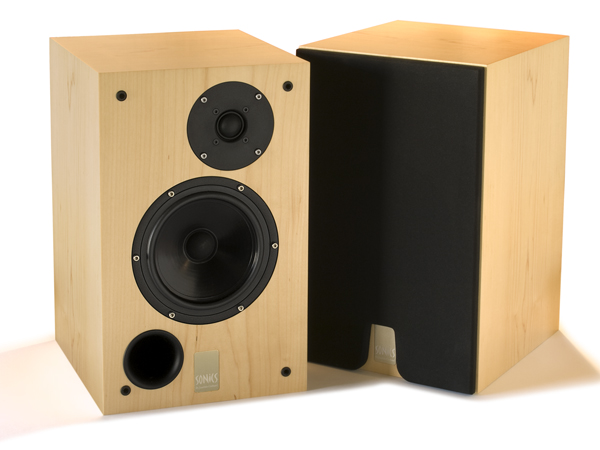GM3
Active Member
- Joined
- Nov 26, 2022
- Messages
- 140
- Likes
- 159
Just thinking, would no baffle be the best baffle? Ex; if you could just have woofers floating in the air, without any baffle, would that be best?
If so, a sort of easy way to achieve it would be to stick woofers at the end of cylinders, and maybe fix them to a sort of thin blade like stand (similar to Anthony Gallo Reference 3), so series of stacked cylinders... They would interact with each other, so I guess maybe you could try to minimize the effect using absorbent material between the woofers... Even have some sort of 'spikes', like '>' sticking out between woofers, as to absorb some of the sound waves which would bounce of other drivers... Sort of absorbing cone, but just horizontal as isolate each driver from the other..
Guess Cabasse-like design, but again looking at Cabasse, they went with spheres/spheroids, maybe they have better properties than plain cylinders? An in-between idea, something you don't see much, but sort of see with some high end speakers; is some sort of sculpting; rounding of the cabinet as to make it less square... Again, thinking out loud, couldn't you achieve this with, strategically adding small blocks in construction to allow removing some material by sculpting and to have more rounded baffle? It would add cost and work... I guess that since it's pretty rare, maybe the baffle diffraction isn't that significant? maybe a bit like perlisten, but more round... (if round helps?!)
You could even hang the aforementioned cylindrical enclosures with some wire or elastics, as to isolate vibrations from the floor.. Like drivers hanging between two towers / cranes.
Other than that, sticking to conventional box design, would sticking the woofer on top of the cabinet, and making the top part of the cabinet like an inverted U, following the woofer top plate, effectively have no baffle at all for the top part, wouldn't that be good? I'm guessing that since I've never seen such a speaker, it wouldn't...
Intuitively, wouldn't something like a really curved cabinet, like the rear of the 802 be a superior cabinet to just slim flat box with rounded edges? Like if you stuck a tweeter and a couple of 6 inch woofer in the rear of a 800d, would that be better for diffraction than a slim box cabinet with rounded edges?

Basically, guess what I'm asking, what would be the optimal cabinets / baffles? I'm also wondering if diffraction is just overblown... I mean, looking at the BW 802, the top woofer is in a sort of spheroid, but, it's just sitting on top of the cabinet, which can't be good..... Can't see that spheroid top cabinet improvement not being hurt by just being 'stuck' on top of the cabinet like that... It's like a self-contradictory design, where diffraction is critical, but it isn't, at the same time...!
If so, a sort of easy way to achieve it would be to stick woofers at the end of cylinders, and maybe fix them to a sort of thin blade like stand (similar to Anthony Gallo Reference 3), so series of stacked cylinders... They would interact with each other, so I guess maybe you could try to minimize the effect using absorbent material between the woofers... Even have some sort of 'spikes', like '>' sticking out between woofers, as to absorb some of the sound waves which would bounce of other drivers... Sort of absorbing cone, but just horizontal as isolate each driver from the other..
Guess Cabasse-like design, but again looking at Cabasse, they went with spheres/spheroids, maybe they have better properties than plain cylinders? An in-between idea, something you don't see much, but sort of see with some high end speakers; is some sort of sculpting; rounding of the cabinet as to make it less square... Again, thinking out loud, couldn't you achieve this with, strategically adding small blocks in construction to allow removing some material by sculpting and to have more rounded baffle? It would add cost and work... I guess that since it's pretty rare, maybe the baffle diffraction isn't that significant? maybe a bit like perlisten, but more round... (if round helps?!)
You could even hang the aforementioned cylindrical enclosures with some wire or elastics, as to isolate vibrations from the floor.. Like drivers hanging between two towers / cranes.
Other than that, sticking to conventional box design, would sticking the woofer on top of the cabinet, and making the top part of the cabinet like an inverted U, following the woofer top plate, effectively have no baffle at all for the top part, wouldn't that be good? I'm guessing that since I've never seen such a speaker, it wouldn't...
Intuitively, wouldn't something like a really curved cabinet, like the rear of the 802 be a superior cabinet to just slim flat box with rounded edges? Like if you stuck a tweeter and a couple of 6 inch woofer in the rear of a 800d, would that be better for diffraction than a slim box cabinet with rounded edges?

Basically, guess what I'm asking, what would be the optimal cabinets / baffles? I'm also wondering if diffraction is just overblown... I mean, looking at the BW 802, the top woofer is in a sort of spheroid, but, it's just sitting on top of the cabinet, which can't be good..... Can't see that spheroid top cabinet improvement not being hurt by just being 'stuck' on top of the cabinet like that... It's like a self-contradictory design, where diffraction is critical, but it isn't, at the same time...!
Last edited:


